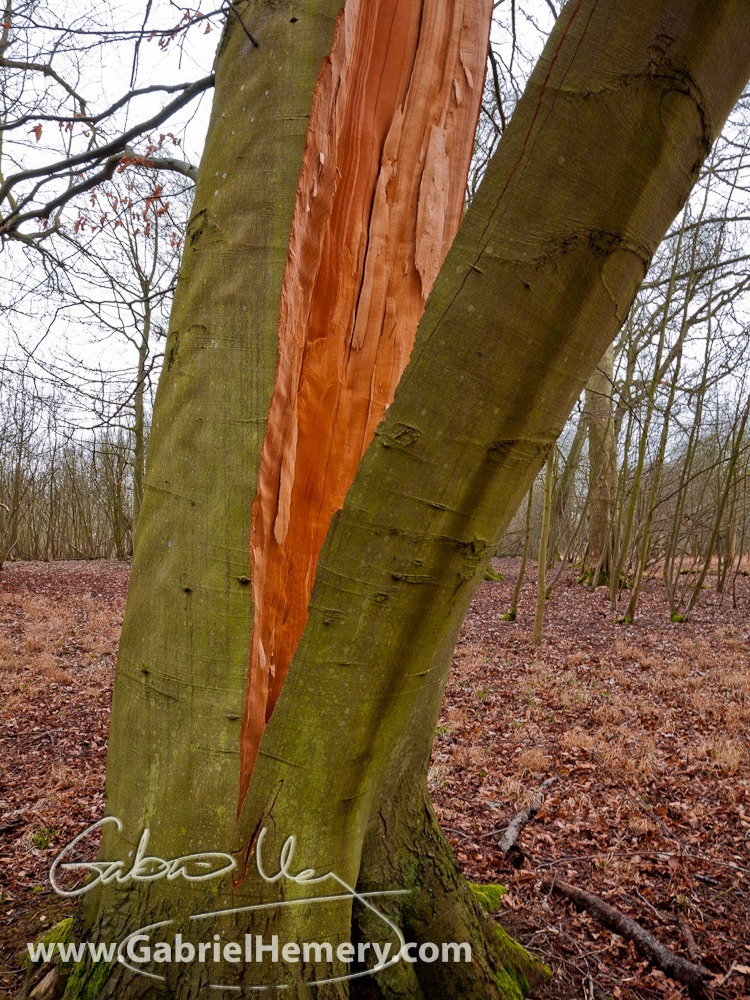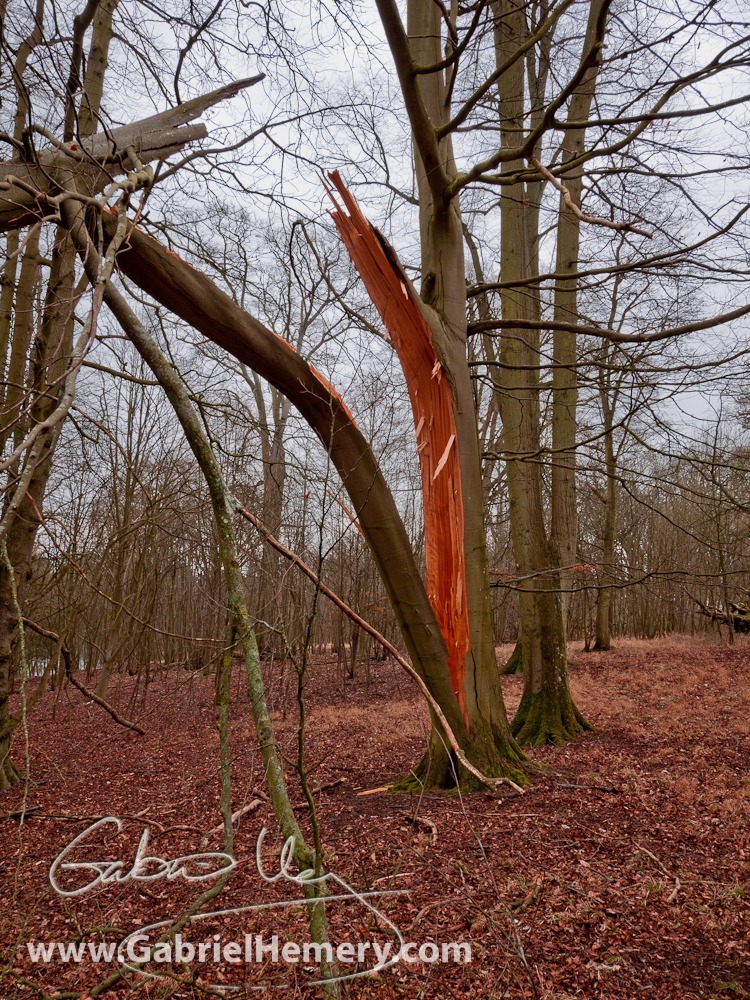On a recent trip to a woodland in southern England I came across a beech tree that had been rent asunder by winter gales. The tree had a large fork and one of its stems had broken causing the entire trunk to split open, all the way to the ground. What caught my eye from afar was the shocking vibrancy of the freshly exposed wood inside the stem. It was almost an iridescent orange and contrasted beautifully with the bright green smooth bark.
On closer inspection, it became clear that damage some distance further up along the limb had allowed rot to set in, causing a structural weakness in the forked stem. Unusually though, the stem had then split halfway through and its weight had then pulled the entire forked stem away from the main stem, rather than simply splitting near to the original weakness.
Discussing this with the woodland owner I learnt that they have no intention to manage the tree as it is not accessible by the general public and therefore of low risk. I’m not an arboriculturist but I would be interested if any readers have some experience of this type of split. I’ve no idea either how a forester/arboriculturist would go about dealing with this if it was necessary. The amount of tension present would present a tremendous (sorry couldn’t resist it) hazard, and the partially hung limb a further complication.
Gabriel Hemery


 This work is licensed under a Creative Commons Attribution- NonCommercial- NoDerivs 3.0 United States License.
This work is licensed under a Creative Commons Attribution- NonCommercial- NoDerivs 3.0 United States License.

On a smaller scale similar damage is done by hedgelayers quite deliberately and with no long term problems. A steeply sloping cut at the original fork could be made so as to remove the damage to what is now a stub there. Then a cautious cut-off at, say, waist height into the damaged wood would remove the tension from the fallen section, after which the damaged wood still attached to the main trunk could be removed down to (almost) ground level. In a smaller tree in a garden setting one might well coat the remaining damaged areas with bitumen paint, but it’s not essential and the tree would very probably continue to grow, even thrive.
Yes you are right although Beech is not normally laid in this way. Given the fungi that normally love to invade Beech I cannot believe that this tree will remain healthy for long. As regards the bitumen – applying wound treatment paints is no longer recommended (see: http://gabrielhemery.com/2011/01/05/how-to-prune-a-tree/) although I admit that this is an extreme case. I’ll have to return in a year or two and see how it looks!
We are yet to have a really good record of fungi succession following such failures – I would love to see some research carried on a tree in similar circumstances, watching and recording the process. Great and invaluable photos.
This is great – has the fallen stem reached the ground? I assume so and thus it is pushing back on itself. Judging from the split this was a relatively short event but was it short enough to prevent significant damage down into the basal area and roots before pushing back against this and sealing a gap? So many questions – I am glad this tree is to remain untouched, few chances are available in the UK to be able to record and process what the tree does next and in many ways work ‘making safe’ the tree is probably more hazardous than leaving it be, given the location (Using a Claus Mattheck book, there is now a new way of exploring woodlands using a guide to spot mechanical processes and failure in trees).
It is not unknown, although rare for a Beech to layer, could this tree then actually live on? quite possible if the basal stem is intact. And what a beauty it would become.
If only someone had been there to witness this and put on film, the noise must have been incredible.
Yes the stem was resting on the ground which, as you say, explains why it remains in this high state of tension. I suppose the tree may live on yet it will be highly susceptible to rot and infection from fungi.
I wish I had witnessed it happening – it must have sounded like a large gun going off!